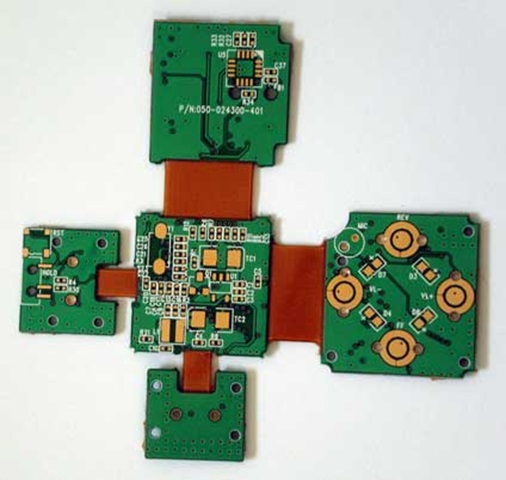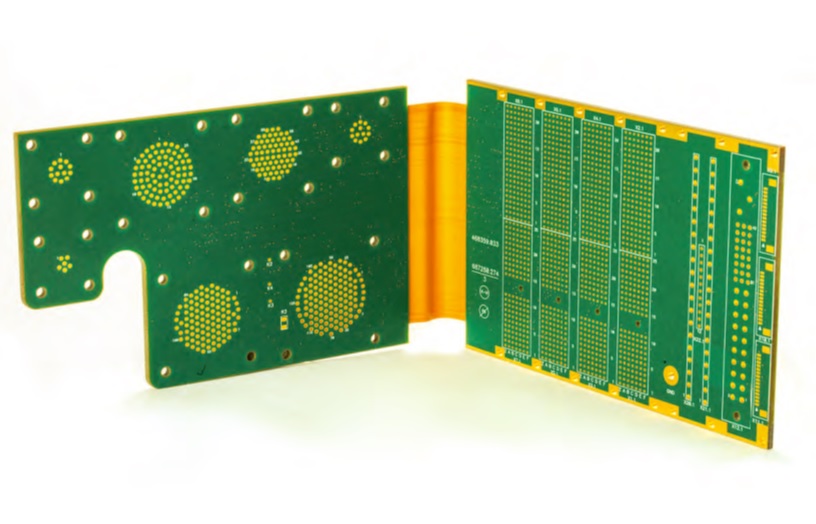Ideas & Solutions
Rigid-flexible multilayer printed circuit boards
Rigid-flex multilayer printed circuit boards are known since more than 25 years, yet have not been able to penetrate the commercial market and have always been considered as exotic and expensive. This because rigid-flex PCBs need special design experience, special manufacturing know how and special precautions during assembly and soldering.
 In the last few years, however, rigid-flex constructions have become increasingly popular, simply because this technology allows an optimal interconnect approach on the system level. The process is accelerated by the rapidly increasing demand for portable electronic devices which have to be packed cost effectively in very small volumes. In addition, the cost for flex materials have come down as a result of the growing volume and number of supplier base, both factors which will further promote the use of this fascinating technology.
In the last few years, however, rigid-flex constructions have become increasingly popular, simply because this technology allows an optimal interconnect approach on the system level. The process is accelerated by the rapidly increasing demand for portable electronic devices which have to be packed cost effectively in very small volumes. In addition, the cost for flex materials have come down as a result of the growing volume and number of supplier base, both factors which will further promote the use of this fascinating technology.
Even so, the complexity of some rigid-flex PCBs, in particular in areas, like avionics and high-end MIL applications, sometimes reaches extreme levels. Therefore, the aspect of manufacturability has to be designed into the board, in order to avoid drawbacks, like high costs, long lead time and poor reliability. At least in cases, where the designer has low experience in constructing rigid-flex PCBs or when the complexity is above standard, the board supplier should be consulted and asked for inputs and advice. In some exceptional cases, the board designs are so supplier-specific that other suppliers may not be able to process the boards without modifications in scaling factors, build-up or materials.
IPC-2223 “Sectional Design Standard for Flexible Printed Boards” contains many useful recommendations for designing rigid-flexible PCBs. The most important things to consider are:
Below you can see some examples of rigid-flexible PCB projects, which can give you the idea of how to improve your products using this interesting technology.

 In the last few years, however, rigid-flex constructions have become increasingly popular, simply because this technology allows an optimal interconnect approach on the system level. The process is accelerated by the rapidly increasing demand for portable electronic devices which have to be packed cost effectively in very small volumes. In addition, the cost for flex materials have come down as a result of the growing volume and number of supplier base, both factors which will further promote the use of this fascinating technology.
In the last few years, however, rigid-flex constructions have become increasingly popular, simply because this technology allows an optimal interconnect approach on the system level. The process is accelerated by the rapidly increasing demand for portable electronic devices which have to be packed cost effectively in very small volumes. In addition, the cost for flex materials have come down as a result of the growing volume and number of supplier base, both factors which will further promote the use of this fascinating technology.
Even so, the complexity of some rigid-flex PCBs, in particular in areas, like avionics and high-end MIL applications, sometimes reaches extreme levels. Therefore, the aspect of manufacturability has to be designed into the board, in order to avoid drawbacks, like high costs, long lead time and poor reliability. At least in cases, where the designer has low experience in constructing rigid-flex PCBs or when the complexity is above standard, the board supplier should be consulted and asked for inputs and advice. In some exceptional cases, the board designs are so supplier-specific that other suppliers may not be able to process the boards without modifications in scaling factors, build-up or materials.
IPC-2223 “Sectional Design Standard for Flexible Printed Boards” contains many useful recommendations for designing rigid-flexible PCBs. The most important things to consider are:
- Place the rigid-flexible PCB into a rigid panel, to improve handling and to allow SMT assembly using conveyor machine.
- Carefully calculate minimal bending radius of flexible parts.
- Don't place components too close to the board edge or to flexible part.
- Don't place vias in flexible part. Don't cross the traces in adjacent layers in flexible part.
- Use cross-hatched planes in flexible part.
- Provide to PCB manufacturer the exact build-up drawing, list of materials, information on the end use, and the drawing of installed bended PCB.
- Don't use acrylic adhesive inside the rigid part.
Below you can see some examples of rigid-flexible PCB projects, which can give you the idea of how to improve your products using this interesting technology.



